Rushes of the Saltmarsh
Coastal saltmarshes can be distinguished from terrestrial habitats by the daily tidal flows that regularly flood the area. Vegetation found at the low-water mark must be able to survive high salt concentrations, regular submersion and a certain amount of water movement. In the upper marsh, flooding is not as extreme. Here, rainfall can reduce the salt concentration while, at the other extreme, evaporation can increase it to create dry, low-nutrient, conditions.
As a result of this range of conditions, a sequence of vegetation zones develops between the low and high tide marks. The zones of the upper marsh experience a lack of habitat protection with some competition between different species while, in the lower marsh, plants are distinguished by their ability to tolerate the physiological stresses of high salinity, tidal submergence and low oxygen levels. Plant species diversity and competition in the lower marsh is, therefore, low.
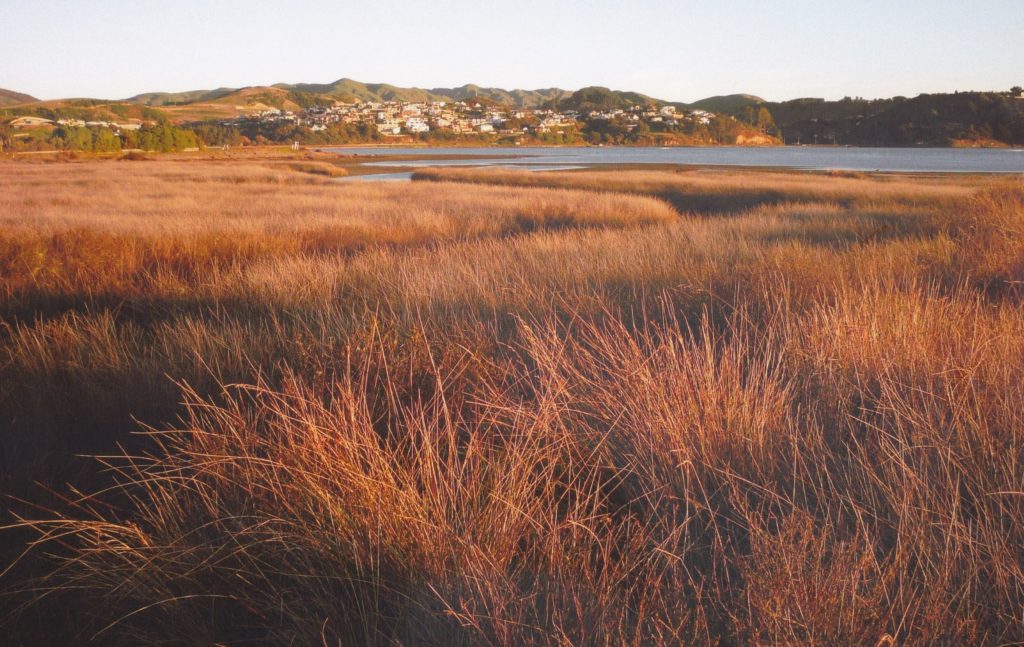
The only plants normally encountered at low water mark are the largely inconspicuous glasswort and the sea primrose. These are very low growing and often submerged for long periods.
However, much more obvious between low and high tide marks are two very dominant rush-like species. These are the sea rush and the jointed wire rush and, although looking superficially similar, they are in fact different in many respects, not least of which is their tolerance to submersion in salt water. Crucially, unlike most plants that absorb oxygen through their roots from air pockets in the soil, these plants are adapted to growing in oxygen-depleted, saturated sediments and instead store oxygen in their stems.
Sea rush and jointed wire rush both belong to a group of plants that include the grasses and sedges but there the similarity ends because each belongs to a different family with different floral characteristics.
Juncus kraussii
— sea rush (wiwi)
Juncus is a genus of plants in the family Juncaceae, the true rushes. There are about 460 species worldwide. J. kraussii is native to New Zealand but also found in Australia, S. Africa and S. America. It is a coastal tussock-shaped perennial herb found in saltmarshes, brackish streams, lagoons, estuaries and river margins in the low to mid-tide zone where submersion can be four hours a day.
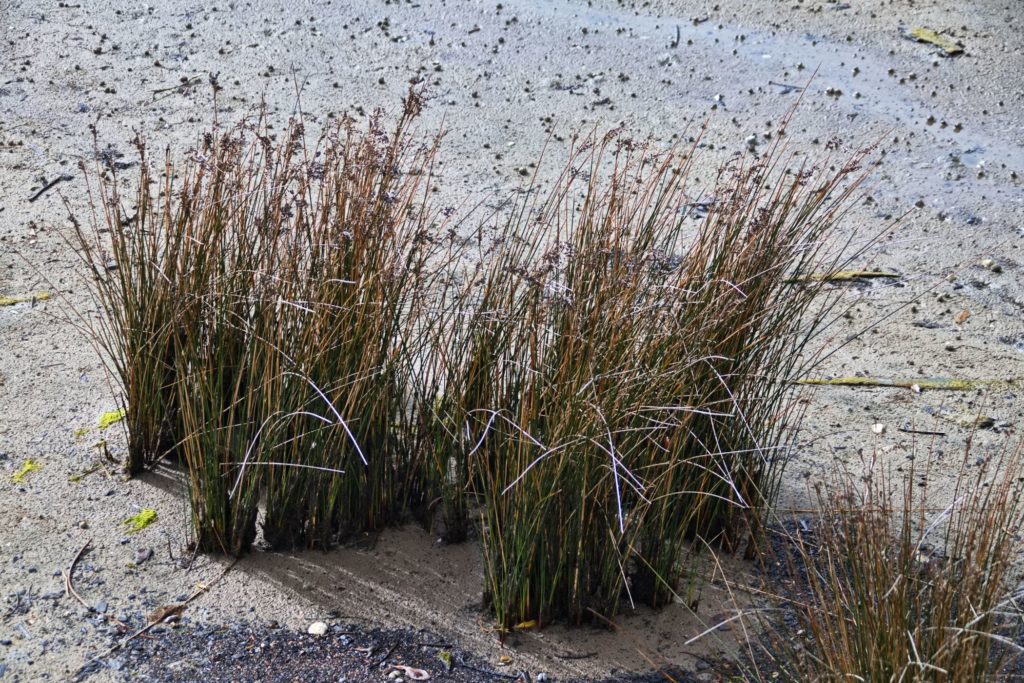
Growing from its many sub-soil rhizomes are loose or dense clumps of light to dark brown, straw-shaped and spine-tipped, flowering stems up to 1.2 m tall. The leaves are similar to the stems but shorter. Flowering between October and January it produces loosely branched, reddish-brown, flower heads near the top of the stem. These wind-pollinated flowers contain both male and female parts. Fruiting follows between November to April with mucilaginous seeds that are dispersed by attachment to animals or by wind and water.
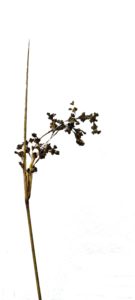
The importance of sea rush to the environment is in the production of salt-laden stems and leaves that decay to provide raw material for the vast populations of invertebrates at the base of the food chain. Its stems gradually absorb salt and eventually stop functioning, at which point they die off. At any one time up to half of the stems of plants near the shoreline will be dead. These dead stems, far from being useless, break away and crumble into small pieces which fall to the saltmarsh floor. This detritus is then carried out to the mudflats where it provides 60%-70% of the food eaten by the herbivores such as mud crabs, mud snails and cockles.
The conditions under which it grows are quite specific. More than 4 hours daily submersion of its roots and it cannot produce new stems fast enough to replace the salt-accumulating ones. Any less than two hours inundation per day and it produces very few dead stems. Also, to redistribute the dead plant matter, there needs to be a free flow of tidal waters throughout the area where the rushes are growing. Consequently, sea rush colonises the zone that spreads inland from the edge of the saltmarsh to the mid to high-tide level.
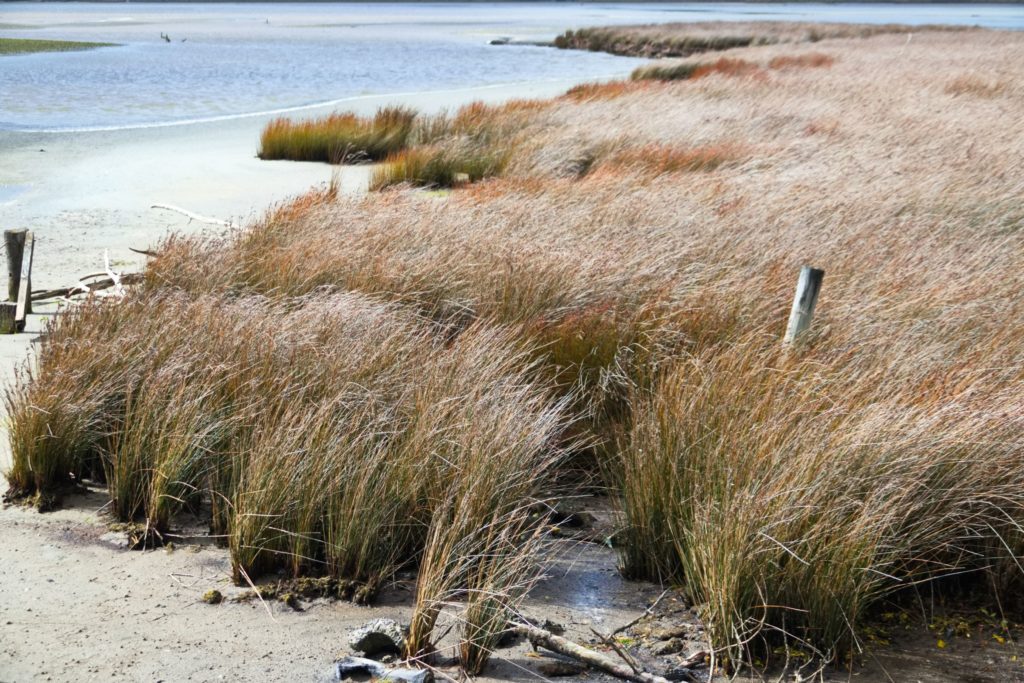
At the Wildlife Reserve this zone is extensive and almost pure stands of the sea rush are visible over a wide area.
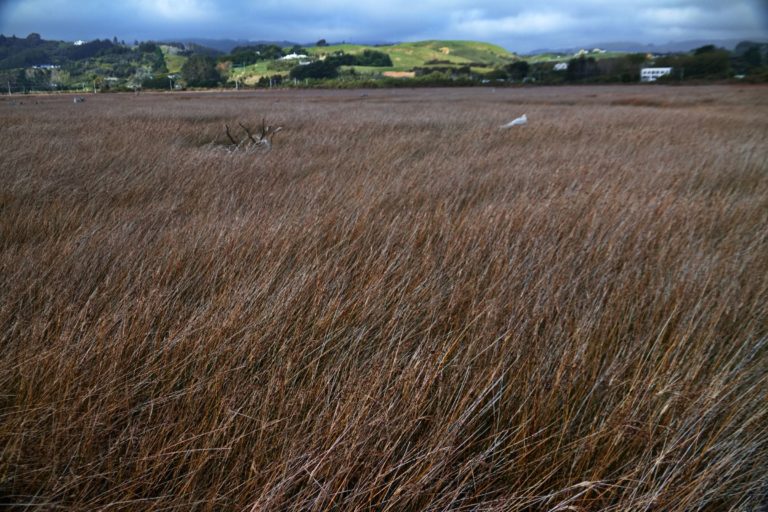
Classification (APG System)
Kingdom: Plantae
Clade: Tracheophytes
Clade: Angiosperms
Clade: Monocots
Clade: Commelinids
Order: Poales
Family: Juncaceae
Genus: Juncus
Species: J. kraussii
Apodasmia similis
— jointed wire rush (oioi)

Jointed wire rush, despite its appearance, is a not a rush at all. Instead, it is classified in the botanical family known as restiads of which there are about 570 species worldwide. It is nevertheless a tussock-shaped perennial herb typical of coastal saltmarsh habitats but this plant grows at the upper tide zone. It forms dense clumps of close-set stems that are bluish-green to reddish-yellow in colour, growing up to 1.5m tall. The stems are thin and wiry with a slight zigzag appearance. The leaves are reduced to bract-like sheaths, dark brown to almost black, spaced at intervals up the stem.
Jointed wire rush has separate male flowers and wind-pollinated female flowers borne on different plants. These flowers are very small and inconspicuous and appear on little spikes emerging from the upper sheaths and at the tips of the stems. Flowering is later than sea rush, occurring from October to December with the fruits produced from December to March. These fruits disperse and float on water, carrying seeds to new locations within the marsh.

Apodasmia similis is found only in New Zealand. It is primarily coastal being found in estuaries, saltmarshes, dunes and sandy flats and hollows. It grows where inundation by incoming tides is less than two hours per day and therefore is found in the zone above sea rush. It can be seen as a distinctive reddish band of vegetation further inland from the sea rush.
Jointed wire rush can also be cultivated for landscaping purposes, away from the coast, but its colour then is grey-green. It’s the salt in its natural habitat that gives it the reddish-yellow colour.
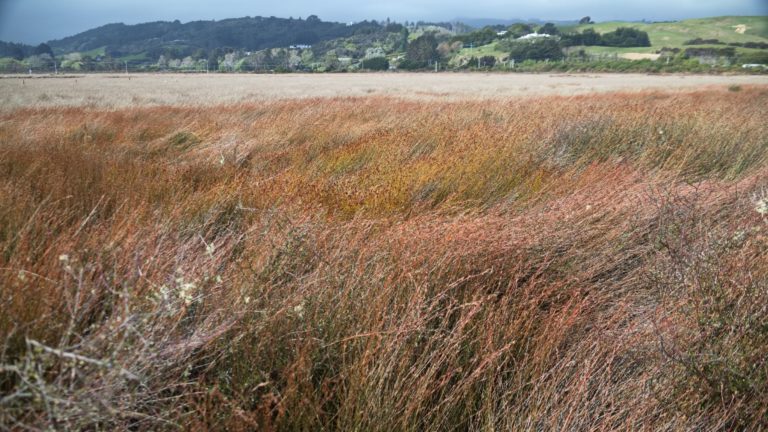
Classification (APG System)
Kingdom: Plantae
Clade: Tracheophytes
Clade: Angiosperms
Clade: Monocots
Clade: Commelinids
Order: Poales
Family: Restionaceae
Genus: Apodasmia
Species: A. similis
Environmentally, jointed wire rush is a natural healer, absorbing polluting minerals and filtering water runoff to remove sediment. The salt-tolerant, tightly spreading rhizomes, with a thick covering of hairs, create a strong hold on the soil and the closely-set stems provide an efficient filtering system which traps sediment, resisting tidal erosion and building up new land which in turn is colonized by shrubs and grasses.
A note of concern.
The future of this species in the Inlet could, in years to come, be jeopardised by climate change. With an expected sea-level rise due to global warming of the seas and melting of ice sheets, the current boundary between sea rush and wire rush will be pushed further inland and towards higher ground. Eventually therefore the area subjected to the two-hour tidal submersion will vanish and with it, the jointed wire rush.
Source: This page was created with content derived from our newsletter The Inlet December 2023.